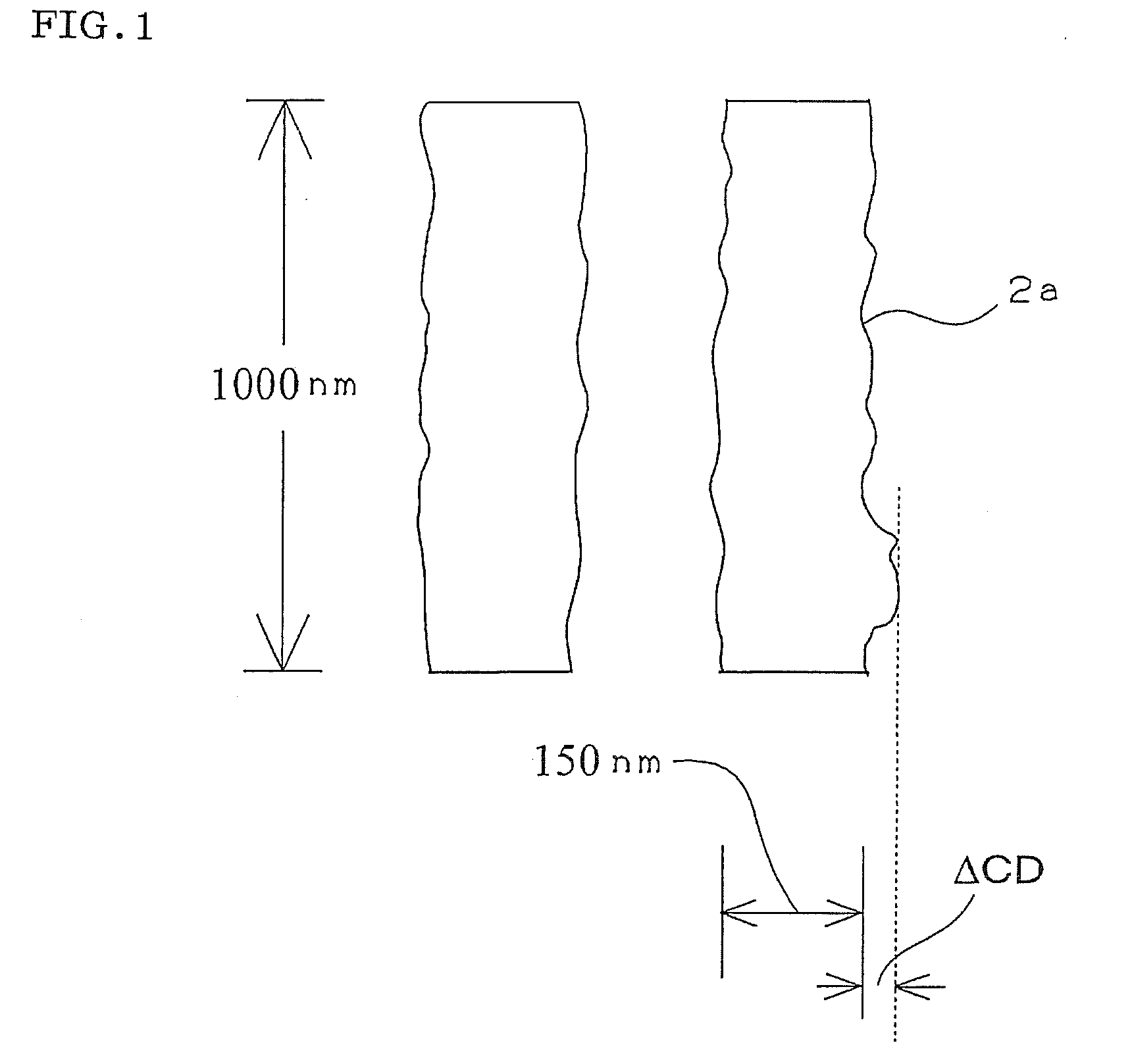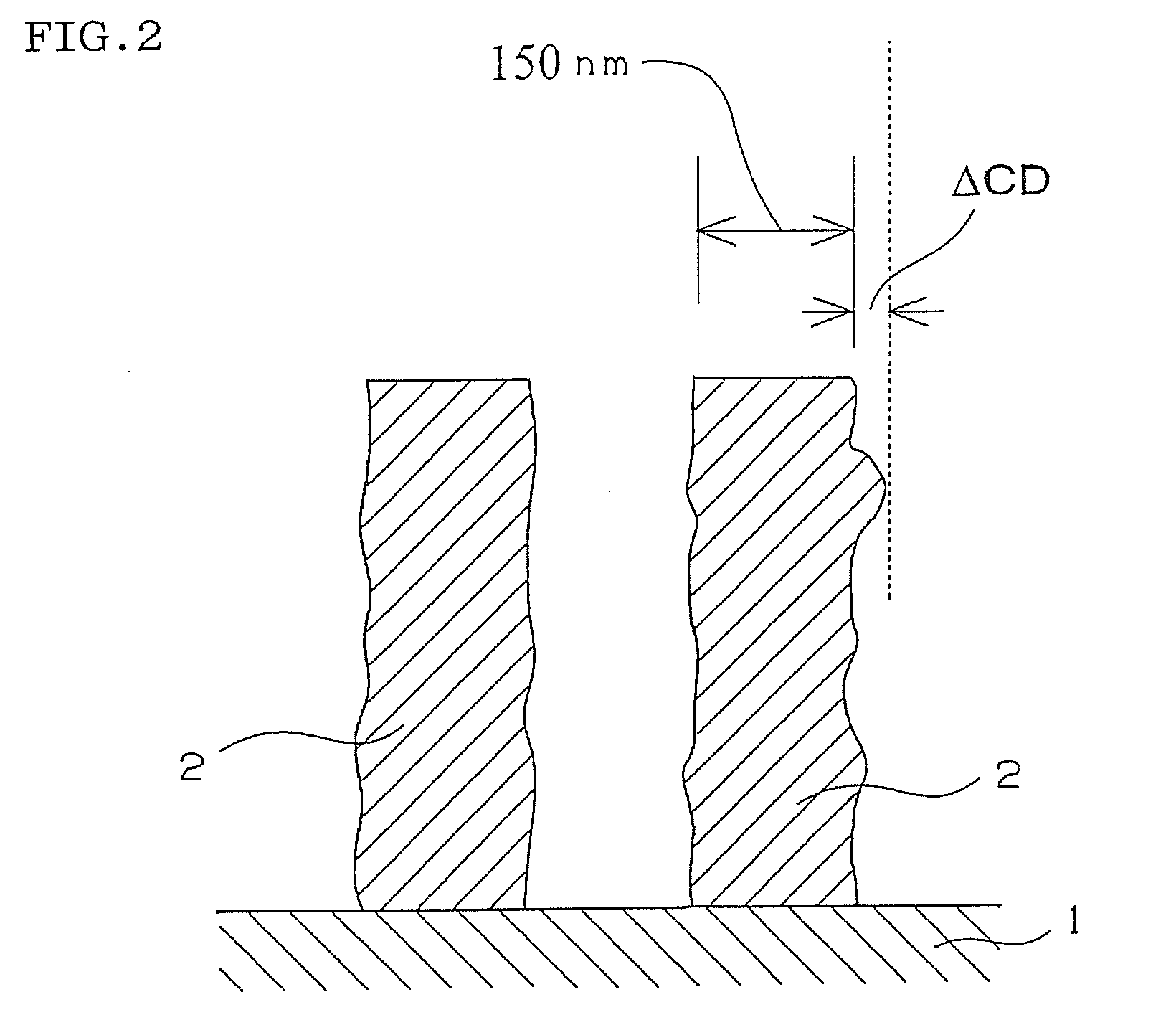Compound and radiation-sensitive composition
a radiation-sensitive composition and compound technology, applied in the field of compound and radiation-sensitive compositions, can solve the problems of difficult use of positive-tone resists in practice, difficulty in etching resistance and sensitivity, and none of them has achieved a usable level in practice in both etching resistance and sensitivity, and achieves low roughness , the effect of effective respons
- Summary
- Abstract
- Description
- Claims
- Application Information
AI Technical Summary
Benefits of technology
Problems solved by technology
Method used
Image
Examples
example 1
Compound (A-1)
[0207]In 45 ml of ethanol, 22.0 g (200 mmol) of resorcinol was added and dissolved, and then 15 ml of hydrochloric acid was added. The solution was cooled with ice to 5° C. while stirring and 10.0 g (50 mmol) of 50% aqueous solution of glutaraldehyde was slowly added dropwise. The mixture was heated at 80° C. for 48 hours to obtain a turbid yellow solution. The suspension was poured into methanol, and the resulting precipitate was collected by filtration. The precipitate was washed three times with methanol. The washed precipitate was dried under reduced pressure at room temperature for 24 hours to obtain a powdery light yellow solid (S) (11.2 g (yield: 79%)).
[0208]The structure of the resulting light yellow solid (S) was identified using an MALDI-TOF-MS (Model No. SHIMAZU / KRATOS matrix support laser ionization flight time-type mass spectroscope, KOMPACT MALDI IV tDE, manufactured by Shimadzu Corp.), an IR (Model No. FT-IR 420-type, manufactured by Jasco Corp.), and a ...
example 2
Compound (A-2)
[0216]To 40 g of 1-methyl-2-pyrrolidone, 3.5 g of the light yellow solid (S) obtained in Example 1 was added. After further addition of 0.8 g of tetrabutylammonium bromide, the mixture was dissolved by stirring at 70° C. for four hours. After dissolution, 3.3 g of potassium carbonate was added and the mixture was stirred at 70° C. for one hour. Then, a solution of 5.6 g of 1-ethylcyclopentyl bromoacetate dissolved in 20 g of 1-methyl-2-pyrrolidone was slowly added and the mixture was stirred at 70° C. for six hours. The mixture was cooled to room temperature and extracted using a mixture of water and methylene chloride. The extract was washed three times with 100 ml of 3% aqueous solution of oxalic acid and twice with 100 ml of water. After discharging the water layer, the organic layer was dried using magnesium sulfate and purified by a silica gel column using a 1:4 (volume ratio) mixture of hexane and ethyl acetate as an eluate to obtain 3.6 g of the Compound (A-2).
[...
example 3
Compound (A-3)
[0218]In 40 g of 1-methyl-2-pyrrolidone, 3.5 g of the light yellow solid (S) obtained in Example 1 was added and dissolved by stirring at 70° C. for four hours. One gram of a 60% NaH tetrahydrofurane solution was slowly added at 0° C. and the mixture was stirred for 30 minutes. Then, 4.8 g of 2-adamantyl chloromethyl ether was added. The mixture was stirred at room temperature for six hours and extracted with a mixture of water and methylene chloride. Extract was washed twice with 100 ml of water. After discharging the water layer, the organic layer was dried using magnesium sulfate and concentrated under reduced pressure to obtain 3.0 g of the Compound (A-3).
[0219]As a result of 1H-NMR analysis, the Compound (A-3) was found to be a compound of the formula (2) in which 39 mol % of the R group was a group shown by the following formula (R-3) (2-adamantyloxymethyl group), with the remaining R being hydrogen atoms.
PUM
| Property | Measurement | Unit |
|---|---|---|
| acid | aaaaa | aaaaa |
| acid-dissociable | aaaaa | aaaaa |
| roughness | aaaaa | aaaaa |
Abstract
Description
Claims
Application Information
 Login to View More
Login to View More - R&D
- Intellectual Property
- Life Sciences
- Materials
- Tech Scout
- Unparalleled Data Quality
- Higher Quality Content
- 60% Fewer Hallucinations
Browse by: Latest US Patents, China's latest patents, Technical Efficacy Thesaurus, Application Domain, Technology Topic, Popular Technical Reports.
© 2025 PatSnap. All rights reserved.Legal|Privacy policy|Modern Slavery Act Transparency Statement|Sitemap|About US| Contact US: help@patsnap.com



